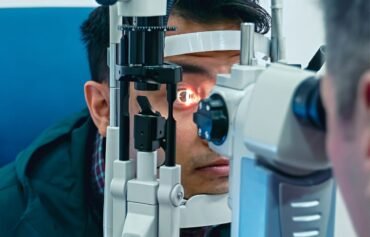Experiencing a fall can be a profoundly disruptive event, potentially derailing not just your day but, in certain cases, having far-reaching complications for your overall quality of life. Whether it’s the result of an unforeseen slip on a wet surface while navigating a store or a consequence of encountering faulty stairs, the occurrence of serious injuries in seemingly mundane places is an unfortunate reality. The challenge lies in identifying when a fall needs an immediate medical attention, treating it as a significant accident, as opposed to when one might be tempted to simply brush off the incident and move forward. In this post we will be discussing the Top 10 Symptoms To Look For After A Fall On Back.
Irrespective of the perceived severity of a fall, it is strongly recommended to report the incident to the facility where it occurred. This not only helps in documenting the event but also serves as a precautionary measure, considering that initial assessments of minor injuries might not reveal the full extent of potential latent damage.
Back injuries and pain often target the lower back, giving rise to various common issues:
- Sprains and Strains: These occur when a back muscle is overly stretched or a ligament tears, causing inflammation. The subsequent back spasm immobilizes the affected muscles, resulting in intense lower back pain and restricted mobility, acting as a natural splint to shield ligaments and joints from further harm.
- Herniated Discs: In cases of symptomatic herniated discs, the pain stems not from the disc itself but from the leaked material irritating a nearby nerve. This can lead to radicular pain, where discomfort radiates to other body parts, such as down the leg from the lower back or down the arm from the neck.
- Fractured Vertebrae: Fractures range from simple compression fractures, where the bone collapses upon itself, to burst fractures, where bone fragments disperse into surrounding tissues, including nerves and the spinal cord. The most severe form is a fracture-dislocation, where the bones break and, due to torn ligaments, shift away from each other.
These injuries can result in pain and limited movement. Treatment options encompass various conservative methods, including medication, icing, bed rest, and physical therapy, as well as interventions like steroid injections or surgery. Preventative measures involve maintaining a healthy weight, strengthening the core, and using proper body mechanics when lifting objects with the legs.
In general, seeking medical evaluation is advisable if the back pain exhibits any of the following traits:
- Onset after an accident, such as a car crash or a fall from a ladder.
- Persistent worsening of back pain.
- Duration of more than four to six weeks.
- Severe pain unresponsive to standard remedies like rest, ice, and common pain relievers (e.g., ibuprofen or Tylenol).
- Intense nighttime pain causing sleep disturbances.
- Simultaneous back and abdominal pain.
- Numbness or altered sensations in the upper inner thighs, groin, buttocks, or genital area.
List Of Symptoms To Look For After A Fall On Back
There are several key indicators that should prompt one to get an immediate medical attention after a fall, including:
- Ongoing Pain: The experience of persistent pain subsequent to an unexpected fall can be indicative of various underlying issues, ranging from fractures and sprains to strains or muscular injuries. Particularly concerning is the development or intensification of back pain, warranting thorough medical evaluation.
- Sudden, Sharp Pain: The sudden onset of intense pain, especially when accompanied by visible signs such as deformities or bone protrusion, signals potential serious injuries such as fractures, demanding immediate and comprehensive medical attention.
- Obvious Swelling: The presence of noticeable swelling on any part of the body post-fall may suggest injury, possibly indicating a broken bone or significant sprain. Seeking prompt medical attention is advisable, especially if the swelling increases or becomes progressively painful over time.
- Signs of a Head Injury: Any impact on the head during a fall is a matter of grave concern. Seeking medical attention is imperative for symptoms like blurred vision, ringing in the ears, persistent headache, dizziness, or confusion, as they may indicate underlying head trauma with potential long-term consequences.
- New Back Pain: A discernible increase in back pain or the onset of back pain subsequent to a fall requires thorough medical evaluation to rule out potential injuries such as whiplash, muscle strain, or herniated discs, which might not be immediately apparent.
- Severe Laceration: Serious cuts or lacerations may demand immediate medical attention to address bleeding and prevent infection. Tetanus shots or other treatments might be necessary, and a professional assessment is crucial for comprehensive care.
- Stomach Pain: Unexplained stomach pain following a fall is a cause for concern, as it could indicate internal damage or bleeding. Seeking immediate medical attention is critical to assess the source and severity of the pain, ensuring timely intervention.
- Substantial Bruising: While some bruising may be expected, extensive or severe bruising can be indicative of more serious injuries, necessitating a thorough evaluation by a medical professional to rule out potential complications.
- Limitations in Movement: Persistent stiffness or limitations in movement, particularly if accompanied by pain, should prompt consultation with a medical professional, as these symptoms may indicate more severe injuries that require careful attention and management.
- Feeling “Off”: If, after a fall, there is a persistent sense of feeling unwell or uncertain, seeking prompt medical evaluation can provide peace of mind and identify any hidden injuries that might not have been apparent during the initial assessment.
Understanding when to get a medical treatment is not only important for individual well-being but also plays an important role in potential personal injury claims. Whether symptoms manifest immediately, are absent initially, or emerge later, obtaining a professional medical evaluation is essential for proper documentation and care. If the fall is attributed to another party’s negligence, consulting with a personal injury lawyer becomes an important step in understanding one’s rights and pursuing compensation. By elongating the content and delving into each aspect in detail, individuals are better equipped to navigate the aftermath of a fall with a heightened awareness of the potential consequences and the importance of seeking timely medical and legal assistance.



